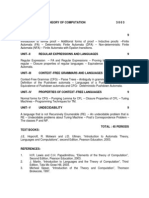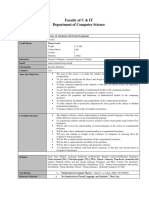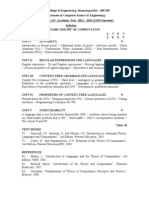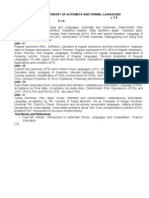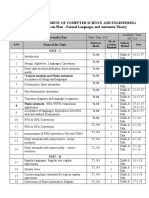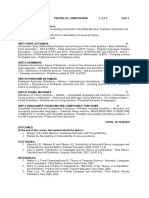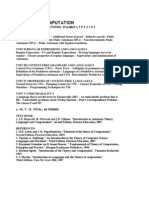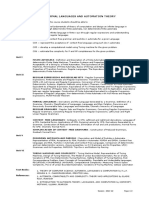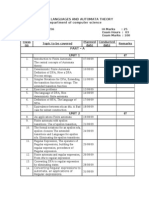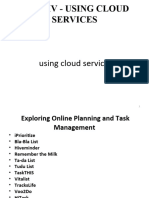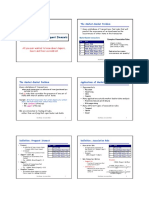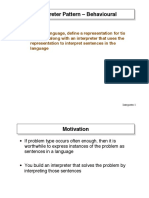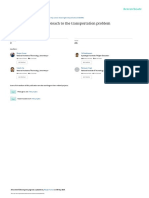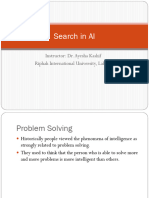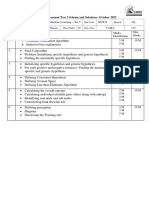0% found this document useful (0 votes)
16 views3 pages19CSC53 Toc
The document outlines the course structure for 'Theory of Computation' including objectives, units, and outcomes. It covers topics such as regular languages, context-free languages, Turing machines, and undecidability. The course aims to equip students with the skills to construct automata, design grammars, and understand computational problems.
Uploaded by
Cse HodCopyright
© © All Rights Reserved
We take content rights seriously. If you suspect this is your content, claim it here.
Available Formats
Download as DOCX, PDF, TXT or read online on Scribd
0% found this document useful (0 votes)
16 views3 pages19CSC53 Toc
The document outlines the course structure for 'Theory of Computation' including objectives, units, and outcomes. It covers topics such as regular languages, context-free languages, Turing machines, and undecidability. The course aims to equip students with the skills to construct automata, design grammars, and understand computational problems.
Uploaded by
Cse HodCopyright
© © All Rights Reserved
We take content rights seriously. If you suspect this is your content, claim it here.
Available Formats
Download as DOCX, PDF, TXT or read online on Scribd
/ 3






